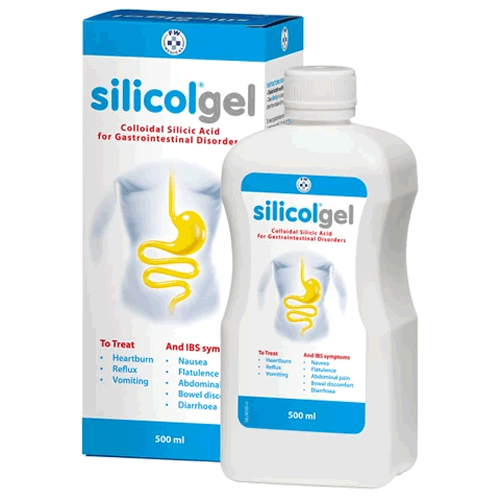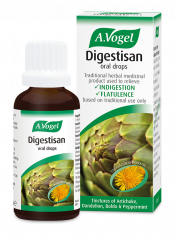What is the best food to eat when you have stomach flu?
If you've recently suffered from a stomach bug, also known as viral gastroenteritis or stomach flu, you might be wondering, what to eat with a stomach bug? However, it's crucial during this time to keep hydrated, and not overburden your system with heavy or stimulating foods. You should also be supplying your body with the essential nutrients it needs to help support your immune system, keep your energy levels up and fight off the invading bug.
This is why I recommend the following five foods to help support your recovery from an upset stomach:
Next, I explore exactly why you should eat these five foods (and preferably in this order) if you’re feeling sorry for yourself and have a stomach bug.
1. Liquids
Forget the food – number one on my list is liquids, preferably clear liquids to start with. If you’ve been making several trips to the toilet as a result of sickness or diarrhoea you are instantly at a much greater risk of becoming dehydrated.
Don’t fall into the trap of assuming drinking water will make your diarrhoea worse, you will definitely need some H2O goodness to help you get back to fighting fit!
Try sipping very small amounts of water at a time or suck on ice cubes or ice chips to ease you in gently (especially if you still fear there’s a chance you’ll vomit it straight back up, or your stomach flu symptoms are still at their peak).
A.Vogel Self-care Tip: Keeping hydrated during illness is very important. This tip may help.
A stomach bug or flu can cause another symptom: dehydration, especially if there has been diarrhoea or vomiting. This tip may make water a little easier to drink, when in a bid to replace lost fluids.
For more tips & advice on digestion, sign up to the ‘5 steps to a better digestion plan’.
If all is going well, you could also try adding in a rehydration solution sachet such as our Balance Mineral Drink or coconut water
which is rich in naturally occurring electrolytes. Just watch out for any electrolyte or sports drink which might also have a high sugar content, as this could further upset your stomach.
Please note, in the case of persistent, watery diarrhoea which could be a sign of severe dehydration, always seek additional advice from a pharmacist or healthcare professional. For those with kidney disease, always check with your doctor before adding in sources of electrolytes.
2. BRAT

For many years the BRAT diet was a go-to when people were ill. The BRAT diet is a bland food diet, but designed to help slowly introduce solid food once more, and has generally been considered helpful by health professionals to be perfect for when someone has a stomach bug or food poisoning. Due to the binding nature of these foods, they are also thought to help counteract troublesome symptoms such as diarrhea.
Remember, when first introducing foods of any type after a stomach bug, you should eat slowly so as not to overburden your stomach.
I outline the BRAT framework below:
B – Bananas: Bananas are high in electrolytes such as potassium and magnesium, which we risk losing during episodes of sickness and diarrhoea. Bananas also contain soluble fibre which can absorb water; this helps to firm up loose stools.
R – Rice: Rice is a bland, yet binding food and is relatively low in insoluble fibre (especially the white variety) and so is therefore fairly gentle on the bowels. Always stick with a small amount to start so as not to overburden your system.
A – Apples and apple sauce: Apples are another helpful fruity option and contain a soluble fibre component called pectin, plus protective vitamin C. Fruit juice isn't so rich in fibre, so this is why to stick to the more whole-food options, rather than something like apple juice. Pectin can absorb many times its weight in water and can therefore help to stiffen up your stools. Be careful of added sugar in any sauce, though, as this could potentially aggravate your symptoms. As an alternative, try some fresh apple with the skin removed.
T – Toast: Toast is a bland food unlikely to contribute to any further upset. As bread is processed it contains little fibre which means it is generally well-tolerated by a sensitive tum.
Wholemeal bread or toast may also be an option for you – it contains slightly more fibre but is still classed as a ‘binding’ food, meaning it can help to absorb any excess liquid in the gut and move along any lurking nasties! Oatcakes are another alternative to bread – they’re gentle on the system, good for providing some sustainable energy and are a nice gluten-free option. Plain cereals can work too, but just watch out for any added sugar.
However, arguably, in more recent years the BRAT diet has become less popular, as it’s pretty restrictive and doesn’t necessarily include the most nutritious and beneficial foods – especially over long periods of time. So, continue on down the list for some other options.
3. Ginger
Another firm favourite in the family medicine cabinet, plus many online sources such as the Mayo Clinic, is ginger. During the very early, tentative stages of your newfound illness (when you’re not quite ready to take on many solids just yet) my advice is to try incorporating some ginger into your regime.
Try some ginger tea bags or simply grate fresh ginger into some hot water with lemon and sip on this. Candied ginger is also an option which you can suck on, just watch out for the sugar content. Ginger is an anti-spasmodic and is considered very good for soothing unsettled tummies – there’s even some research to back up its use. (1)
Caffeine-free teas such as ginger are another tip to get some extra water into your system (although plain water alone is still a priority) and options such as ginger or turmeric have the added bonus of being anti-inflammatory – just watch they aren’t overly spicy!
4. Homemade soup
As soon as you are sure the BRAT foods are going down ok it’s time to move swiftly on – don’t feel you have to restrict yourself to BRAT foods for days on end – you need some nutrients!
Continuing to take it slowly, you can begin to concentrate on introducing some of your essential macronutrients including complex carbohydrates and protein. By slowly I also mean sensibly. Food choices are critical at this stage as the nausea could easily make a hasty return.
Also, by slowly introducing some sources of insoluble fibre in your vegetables or wholegrains including rice or barley, you can gently prompt your bowels to move and get rid of any remaining traces of pathogens!
Chicken soup is also a classic choice when people are ill. The chicken component is a lean meat (alternatives can also include turkey, white fish or oven boiled eggs) which allows you to benefit from some protein and not too much fat which could risk bogging down your system. Protein is required for repair and recovery processes around the body – just what you need after fighting off an infection. Plus, lots of watery stock, for further rehydration.

Therefore, as a result of the combination of the different components, chicken soup is assumed to be helpful for those suffering with an illness, and has been used traditionally in this way.
For a more modern take on this, and arguably a healthier alternative healthier, why not try making some other variations of homemade soup with more of a focus on warm, cooked vegetables and wholegrain rice. Opt for short-grain rice which is less abrasive, soaks up more water and is easier to chew. Pearl barley or red lentils are other good options. They’re nutritious, gentle n the system and high in fibre.
Finally, try seasoning your soup with a little herb infused sea salt such as Herbamare and, together with the chicken and vegetables, you will end up with a broth rich in vitamins, minerals and electrolytes – all of which your body will be crying out for!
Want more inspiration? Below I share some simple, tasty and nutritious soup recipes to help get you back on track.
Carrot, Lentil & Coriander Soup
Aubergine & Lentil Soup
Pumpkin & Potato Soup
5. Pre or probiotic foods

A good few days after the diarrhoea and sickness have passed, (so hopefully a good sign the gastroenteritis is on the way out), it can be useful to introduce some prebiotic options such as apple cider vinegar or probiotic-rich options such as yoghurts or sauerkraut (you might not want to go in too early with dairy products, as they can be a little heavier on your system).
Apple cider vinegar is liquid (so will only add to your rehydration), plus, naturally acidic and therefore helps to support your stomach secretions, which could actually go a very long way in supporting your full system and possibly even have positive effects on other health conditions, from weight management, to mental health, or even sexual health, (since the bowel sits in such close proximity to our intimate areas). We are continually learning how important your digestive health is for your overall health.
The term for how apple cider works is as a ‘prebiotic,’ by helping to create the correct environment for your good bacteria, and one that bad bacteria would struggle to survive in.
Molkosan® is arguably similar, since it is rich in L+ lactic acid. Let's get the balance back quickly!
Once you've started with some prebiotics, probiotics are the next step. Good quality yoghurts such as Greek yoghurt often contain naturally occurring gut-friendly bacteria, although, just be sure to check the label where the bacteria should be listed and, while you're there, check for sugar too. Added sugar should be avoided or it could encourage further bacterial imbalance.
Good quality probiotic supplements can give you a final boost if you feel you’re taking that little bit longer to return to your old self – your good bacteria can really take a hit after an infection and it can often take a while for the balance of bacteria in your gut to return to normal again.
How long after stomach flu can I eat?
There are no specific guidelines on this, and the best advice is to pay close attention to your symptoms. Whilst it's important to include liquids from the get-go to help avoid dehydration, limiting food for a little bit longer can often be sensible if your stomach is still very sensitive.
After having stopped vomiting for a few hours, you should be able to start gradually introducing some food. As mentioned above, start with some liquid soups or bland foods and introduce them very gradually before reassessing your symptoms.
Foods worth avoiding if you have a stomach bug
Whilst we’ve now covered foods worth including, are there any you should be actively avoiding if you’ve recently had a bug? Some ones to watch include the following:
- Sugar – Too much sugar could exacerbate symptoms of diarrhoea and add to the nausea. Watch out for hidden sugars in food or drinks you might naturally reach for during this time including sports or electrolyte drinks, or carbonated drinks that have been left to go flat.
- Caffeine – Caffeine acts as a stimulant so isn’t very helpful for a tummy in turmoil.
- Salt – Whilst replenishing lost electrolytes is important, too much salt could upset your toilet habits further.
- Fried food – High-fat options are heavy on your stomach and could make you feel queasy.
- Dairy – Although adding some good quality yoghurt at a later date can be helpful, consuming too much dairy, i.e. guzzling lots of milk or including large quantities of cheese, could be problematic initially due to the higher fat content.
- Spicy food – Whilst gentle spices can have helpful anti-inflammatory properties, hot spices could leave you running to the loo.
- Alcohol – Alcohol will contribute to fluid loss and dehydration and put your digestive organs under pressure, so it’s a no from me until you’ve fully recovered.
How else can you speed up your recovery from gastroenteritis?
As much as eating may be on your mind as you try to recover from your viral gastroenteritis symptoms, there are some other habits and home remedies that can put you in good stead for a speedy recovery from a stomach virus:
- Rest up – This applies to both you and your stomach. Rest is vital to help support the recovery process so don’t commit to anything too quickly and take some time out.
- Apply some heat – A hot water bottle can be soothing, particularly if you are experiencing any uncomfortable cramps as a result of the recent infection.
- Acupressure – Stimulating acupressure points on the inside of the wrist may help to alleviate symptoms of nausea.
- Medications from the doctor – If you've visited your doctor or pharmacist they may have recommended some medicines such as paracetamol, if your symptoms are accompanied by a fever, or anti-sickness and anti-diarrhoeal medications. However, just be careful not to exacerbate a sensitive tummy by ensuring you take them correctly.
- Disease control - whilst your stomach flu symptoms didn't necessarily come from contaminated food, it's best to try and stick to healthy habits in the kitchen in the meantime. Always wash hands thoroughly after going to the loo, especially when you are already unwell so as not to add any further problems to the mix.
When to visit the doctor?
Stomach bugs are very often caused by viruses and common culprits include norovirus and rotavirus. Generally, these pesky pathogens cause irritation and inflammation of the lining of your stomach, also known as gastritis, which can give rise to symptoms such as:
- stomach cramps
- nausea
- vomiting
- diarrhoea.
As your immune system works hard to fight off the virus, you can also experience a fever and aching muscles and joints, which are also common symptoms of other types of viruses too, such as the flu virus. If in doubt, keep note and be your own symptom checker.
Luckily, unlike some other viruses, those which cause a tummy bug can often be eradicated fairly quickly and many people experience a ’24 hour bug,’ by which time your immune system has shunned the invader and your symptoms start to ease. If your symptoms persist for longer, however, or you experience any of the following symptoms, it's time to go to the doctor:
- Blood in your vomit or poo
- Signs of serious dehydration including stopping peeing, dry mouth or eyes
- A high temperature or fever
- Swollen or painful tummy
- Vomiting that hasn’t subsided after 24 hours.
A note on children: if it’s a child that your worried about, much of the same advice stands with regards to keeping them hydrated and trying them out with some bland or binding foods. However, watch out for the warning signs as mentioned above and get them to the doctor if their symptoms don't seem to be subsiding.
What is the difference between a stomach bug and food poisoning?
| Stomach bug | Food poisoning | |
| Cause | Stomach bugs or gastroenteritis are generally caused by viral infections. | Food poisoning is caused by pathogens affecting us, most commonly bacteria, parasites but in some cases viruses or fungus. |
| Incubation period | After being exposed to a virus that can contribute to gastroenteritis, symptoms often appear within 12-48 hours. | Food poisoning symptoms often crop up quite quickly after being exposed to the infected food (within 2-6 hours on average) although certain bugs have a longer incubation period, even up to a few days. |
| Symptoms | Stomach pain, nausea, vomiting, diarrhoea, fever, weakness and headache. | Stomach pain, nausea, vomiting, acute diarrhoea, dehydration, fever, weakness, headache, weight loss or affected cognitive functions. More severe or persistent symptoms should be treated by a doctor as soon as possible. |
| What can I eat? | Foods as listed throughout this blog. Keeping hydrated, BRAT foods and soups are good options initially. | Foods as listed throughout this blog. Keeping hydrated, BRAT foods and soups are good options initially. |
| How soon can I eat? | Depending on symptoms, starting to introduce food a few hours after vomiting ceases can often be a positive step. | Depending on symptoms, starting to introduce food a few hours after vomiting ceases can often be a positive step. This may be after several days, but keeping hydrated should be a priority throughout. |
| How can you help prevent it in the future? | Avoid contact with people infected with a bug already and ensure could hygiene practices i.e. washing hands if around. | Food hygiene practices should be put into play including proper storage, preparation and cooking techniques. |
Blog originally published on 14/09/16, updated on 22/02/24










